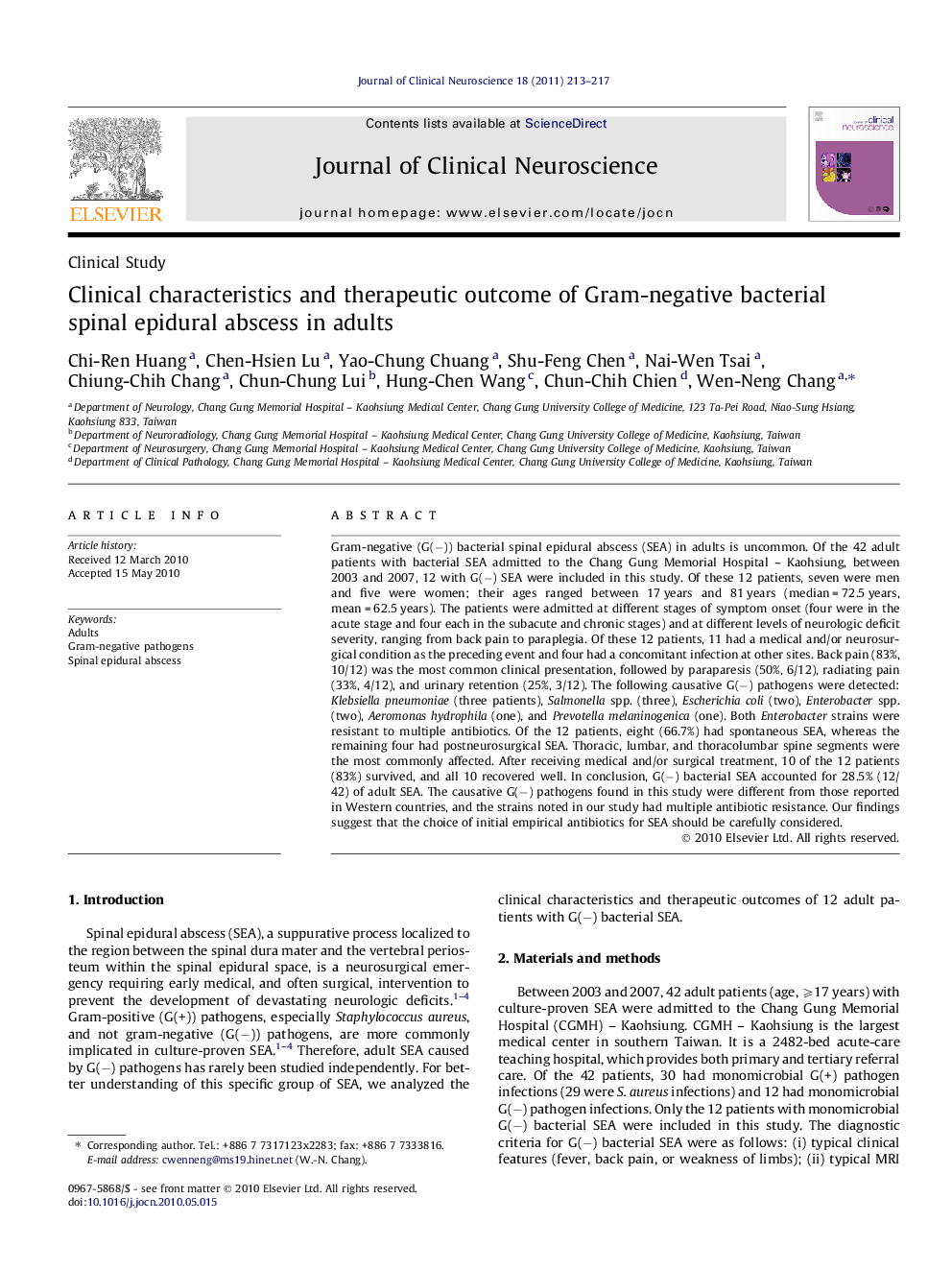| کد مقاله | کد نشریه | سال انتشار | مقاله انگلیسی | نسخه تمام متن |
|---|---|---|---|---|
| 3062052 | 1187484 | 2011 | 5 صفحه PDF | دانلود رایگان |

Gram-negative (G(−)) bacterial spinal epidural abscess (SEA) in adults is uncommon. Of the 42 adult patients with bacterial SEA admitted to the Chang Gung Memorial Hospital – Kaohsiung, between 2003 and 2007, 12 with G(−) SEA were included in this study. Of these 12 patients, seven were men and five were women; their ages ranged between 17 years and 81 years (median = 72.5 years, mean = 62.5 years). The patients were admitted at different stages of symptom onset (four were in the acute stage and four each in the subacute and chronic stages) and at different levels of neurologic deficit severity, ranging from back pain to paraplegia. Of these 12 patients, 11 had a medical and/or neurosurgical condition as the preceding event and four had a concomitant infection at other sites. Back pain (83%, 10/12) was the most common clinical presentation, followed by paraparesis (50%, 6/12), radiating pain (33%, 4/12), and urinary retention (25%, 3/12). The following causative G(−) pathogens were detected: Klebsiella pneumoniae (three patients), Salmonella spp. (three), Escherichia coli (two), Enterobacter spp. (two), Aeromonas hydrophila (one), and Prevotella melaninogenica (one). Both Enterobacter strains were resistant to multiple antibiotics. Of the 12 patients, eight (66.7%) had spontaneous SEA, whereas the remaining four had postneurosurgical SEA. Thoracic, lumbar, and thoracolumbar spine segments were the most commonly affected. After receiving medical and/or surgical treatment, 10 of the 12 patients (83%) survived, and all 10 recovered well. In conclusion, G(−) bacterial SEA accounted for 28.5% (12/42) of adult SEA. The causative G(−) pathogens found in this study were different from those reported in Western countries, and the strains noted in our study had multiple antibiotic resistance. Our findings suggest that the choice of initial empirical antibiotics for SEA should be carefully considered.
Journal: Journal of Clinical Neuroscience - Volume 18, Issue 2, February 2011, Pages 213–217